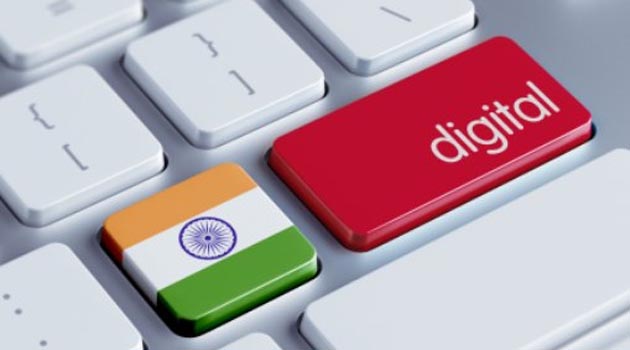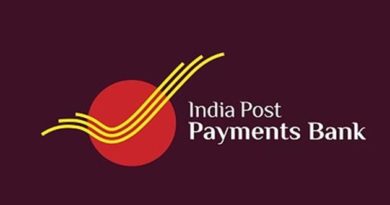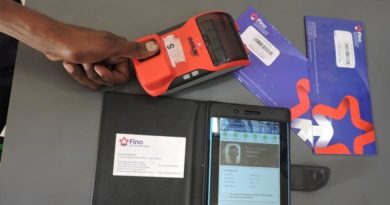Step towards Digital Economy and Financial Inclusion through Digital India
Introduction
Financial inclusion is delivering the banking services to the weaker and low income section of society so that more and more people can utilize the banking service. We have seen small but significant steps being taken by the government, towards digital empowerment of the people. Financial inclusion defined by the RBI “Financial inclusion is the process of ensuring access to appropriate financial products & services needed by all sections of the society in general & vulnerable groups such as weaker sections and low income groups in particular at an affordable cost in a fair & transparent manner by mainstream institutional players. With cash still being the preferred mode of transaction for a large section of Indians, there is a greater need to popularize the cashless transaction model in a big way.
The ‘Digital India’ programme, an initiative of honourable Prime Minister Mr. Narendra Modi, will emerge new progressions in every sector and generates innovative endeavours for next generation. The motive behind the concept is to build participative, transparent and responsive system. The Digital India drive is a dream project of the Indian Government to remodel India into a knowledgeable economy and digitally empowered society, with good governance for citizens by bringing synchronization and co-ordination in public accountability, digitally connecting and delivering the government programs and services to mobilize the capability of information technology across government departments.
Demonetisation – The tool to a Digital Economy
At the time of the demonetisation announcement by Prime Minister Modi, the two banned notes of INR 500 and INR 1000, accounted for nearly 86 percent of all notes circulated in India’s heavily cash dependent economy. The reaction to the announcement was a mixed one. Those in favour felt the demonetisation drive would bring both black, and white money into the banks, which would increase the banks liquidity and bring down the soaring inflation rates. This would further lead to higher expenditure on infrastructure projects – fuelling economic growth and reduced taxes. The move also meant increased financial inclusion, with more and more Jan Dhan Accounts being opened. Supporters of the decision also felt that the step would result in lowering the Government’s fiscal deficit and would spur digitisation and impel the digital economy. Many believe, the entirely cash dependent economy, has led to evils like hoarding of black money – an avenue for counterfeit currency and funding of terrorist activities across the country. Another fallout of India’s cash dependent economy is that, only one percent of its citizens i.e., out of the total population of 1.25 billion, only 1.23 million people, are currently paying taxes.
Gearing up for Digital Economy
India has been in the process of gearing up for a digital economy over the last few years. The Pradhan Mantri Jan Dhan Yojna (PMJDY), which was launched in 2014, increased the bank account penetration from 35 percent to 53 percent. 1.08 billion people have been scanned through biometrics for Aadhar card issuance and as many as 36 crore bank accounts have already been seeded with Aadhar, which has reduced the cost of e-KYC of banks to one tenth. There are currently around 400 million smartphones in India that can be used for e-wallet transactions and about 15 lakh POS machines and 2.5 lakh ATMs in place, to support the transition from a cash dependent economy into a digital one. The key components of a digital economy include front-end devices and infrastructure – in the form of hardware, software and network. On the legal front, provisions are already in place in the CrPC, IPC and IT Act, which gives legal coverage in case of cyber frauds. The key building blocks of the digital economy include affordable, accessible broadband; next generation infrastructure; innovation in a digital economy; digital citizens and businesses; digital government and communities & digital inclusion. Ways to Go Cashless Debit / credit / pre-paid cards are plastic payment cards that can be used instead of cash when making purchases. In a debit card transaction, the money is debited directly from the user’s bank account unlike a credit card transaction. A pre-paid card is generally used when people don’t want to carry large sums of money and allows for making purchases as and when needed. Unified Payments Interface (UPI) is a payment system that links multiple bank accounts (UPI participating banks only) of a customer, facilitating banking services like fund transfer (P2P), and merchant payments through a single mobile application.
Unstructured Supplementary Service Data (USSD) is a unique payment platform that allows mobile banking services on a basic mobile handset without the use of internet data facilities. USSD service is devised to bring about the inclusion of the under-banked section of the society into the mainstream banking sector. An individual can get into a banking transaction by dialing *99#. Aadhar Enabled Payment System (AEPS) – A system that leverages Aadhar online authentication and enables Aadhar Enabled Bank Account (AEBA), to be operated in anytime-anywhere banking mode, by the marginalised and financially excluded segments of the society through micro ATMs. A digital wallet is a payment platform that allows an individual to make electronic transactions through a smart phone. An individual’s bank account can also be linked to a digital wallet. There are many e-Wallets like Paytm, Mobikwik, Oxygen, SBI-Buddy that are prevalent these days. Bitcoin is a digital and global money system (currency). It allows people to send or receive money across the internet.
Government Initiative to make India Cashless
- Jan-Dhan, Aadhar and Mobile (JAM) together can help us move towards a cashless economy.
- Benefits and subsidies in 74 government schemes, paid directly to beneficiaries under Direct Benefit Transfer.
- Under PMJDY, 25.78 crore bank accounts have been opened in urban and rural areas so far. Moreover,19.36 crore Rupay cards have been issued.
- Debit/Credit/Prepaid cards are plastic payments cards that can be used instead of cash when making purchases. In a debit card transaction, the money is debited directly from the user’s bank account unlike a credit card transaction. A pre-paid card is generally used when people don’t want to carry large sums of money and allows for making purchases as and when needed.
- Unified Payments Interface (UPI) is a payment system that in links multiple bank accounts (UPI participating banks only of a customer, facilitating banking services like fund transfer (P2P), & merchant payments through a single mobile application.
Steps towards Financial Inclusion and Digital India
India’s financial inclusion policy, Pradhan Mantri Jan-Dhan Yojana has shown qualitative results. The plan also envisages access to insurance, credit and pension facilities and channelling of all government benefits directly into the beneficiaries’ bank accounts. In addition, the RBI has strengthened the Unified Payment Interface (UPI) in order to facilitate digital money transfers. In line with the digital strategy, the government has granted permission to a couple of payment banks, thereby kick-starting the initiative. Thus digital India and financial inclusion are closely connected. UPI has been conceived as an application-level interface which aims to bring several multiple payment service providers in the country on a single platform by providing an element of interoperability. Any person with a valid bank account can transfer funds and make payments without divulging crucial bank or credit /debit card information.
With cash still being the preferred mode of transaction for a large section of Indians, there is a greater need to popularize the cashless transaction model in a big way. One of the most effective methods of bringing in more number of people under the ambit of cashless transactions is to venture into the vastly untapped domestic Smartphone network which is estimated to cover around 500 million users in the next five years. Policy-makers are looking at the UPI as a critical financial inclusion tool which can go a long way in giving an impetus to transactions under various schemes such as the Pradhan Mantri Jan DhanYojana and direct benefit transfer schemes. Being a disruptive financial tool which will enable large-scale financial inclusion and popularise the cashless transaction model, UPI has the potential to lift service delivery paradigms to the next level.
With increased internet usage and penetration, the Digital India initiative, facilitating a proper payments infrastructure, will pave the way for a seamless digital economy. The government has outlined its vision in this regard and highlighted three core areas – increased thrust on setting up the required infrastructure as a utility to each and every citizen, provision of services on demand and governance and lastly, digital empowerment of the citizens.
India is home to an unbanked population of around 47 per cent. Here, technology can play a crucial role in driving financial inclusion of the under-banked as well as un-banked population in the country. Traditional businesses are proving to be an unviable proposition for banks in remote or rural areas because of infrastructural issues. Also, conventional banking model cannot be the panacea for small-size of deposits, loans, and other small-scale transactions in the rural parts of the country. Soon, banking will turn out to be much more accessible to the millions as the financial ecosystem will move away from the physical distribution model to a cashless and digital platform. Of course, by ensuring financial inclusion, banks can benefit from the adoption of the digital model as it comes with a lot of benefits such as increased business volumes, lower operating costs, while also driving financial inclusion.
The government has also launched a infrastructural project under the Digital India initiative – The National Optical Fibre Network (NOFN) or Bharat Net, estimated to cost INR 70,000 crores approximately. The project is an ambitious initiative to trigger a broadband revolution in rural areas. It aims to make network infrastructure accessible on a non-discriminatory basis by laying a scalableoptical fibre network. It targets to reach over 2.5 lakh gram panchayats with hotspots and provide 100 Mbps connectivity to them. It also aims to provide households with an affordable broadband connectivity of 2 Mbps to 20 Mbps. The project is a critical piece of infrastructure without which we just cannot move towards digital India and the government has already allocated INR 10,000 crores towards the project in the coming financial year. The government also plans to launch a ‘Digi Gaon’ initiative which will provide telemedicine, education and skills through digital technology, thereby fulfilling all goals of Digital India.
The advent of biometrics technology-based Aadhar card will be the big disruptor in the financial technology segment. An ‘Aadhar’ card has a 12-digit individual identification number. The Aadhar-Enabled Payment System (AEPS), allows online interoperable financial inclusion transaction at points of sale (MicroATM) through the business correspondent of any bank using ‘Aadhar’ authentication.
It is also heartening to see that situations are conducive for the successful establishment of a digital ecosystem, and it won’t be far when the government’s agenda of financial inclusion of the entire population will become a reality. Digital banking has manifold advantages, and there has been a perceptible increase in the adoption of digital technologies.
In this context, digital platforms are likely to deliver financial services to both the unbanked and the underbanked population, especially in rural/remote regions, at a low cost, and subsequently increase digital financial access to the vast swathes of the country’s population. The use of digital channels can bring down the transaction costs in a great way.
Banks should target previously underbanked and financially excluded segments with the help of technology; this could provide the necessary traction on new demand, as urban markets are crowded with a large number of players. It could also give banks an opportunity to spread the costs or investments in technology over a much larger base and increase the utilization of existing technology.
Conclusion
Today, every nation wants to be fully digitalized and this programme strives to provide equal benefit to the user and service provider. The Digital India drive is a dream project of the Indian Government to remodel India into a knowledgeable economy and digitally empowered society, with good governance for citizens by bringing synchronization and co-ordination in public accountability, digitally connecting and delivering the government programs and services to mobilize the capability of information technology across government departments. It is a well-known fact that digital India is the outcome of many innovations and technological advancements. These transform the lives of people in many ways and will empower the society in a better manner. For standing out on a global platform India has to look upon the inclusive growth and financial inclusion is the key for inclusive growth. Financial Inclusion has not yielded the desired results and there is long road ahead but no doubt it is playing a significant role and is working on the positive side.
About the Author
Paritosh Kumar
Senior Manager (Faculty), Union Bank of India
Staff Training Centre, Kolkata
Author is a Faculty in the Union Bank of India Staff Training Centre at Kolkata. He has got about 11 years of experience in various facets of banking. He is a Graduate in Mathematics and post Graduate in Computer Science.




